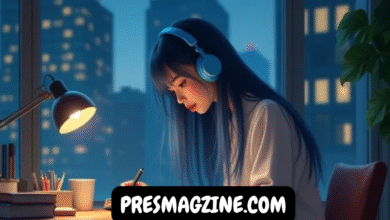Photoacanhante is an emerging term that has garnered attention for its unique and versatile meaning. While it may be unfamiliar to many, it represents a concept that blends creativity, imagery, and interpretation. By exploring photoacanhante, we can uncover how visuals shape human communication, art, culture, and technology. This article provides a detailed examination of its origins, applications, and growing influence in society.
Origins and Background of Photoacanhante
While the word photoacanhante itself may be modern, its spirit has existed throughout history. Humans have always relied on images to communicate and preserve knowledge. Ancient cave paintings, religious icons, and early forms of photography all represent humanity’s desire to capture and convey meaning through visuals. In this sense, photoacanhante continues a timeless tradition.
With the invention of photography in the 19th century, the way people engaged with images changed dramatically. No longer limited to paintings or drawings, photography introduced a new method of documenting reality. As photography evolved, so too did our understanding of visuals. This laid the foundation for more advanced interpretations, eventually shaping concepts like photoacanhante
In modern times, digital technology has expanded the power of photography beyond imagination. Smartphones, editing tools, and artificial intelligence now allow images to be created, altered, and shared instantly. Photoacanhante reflects this shift, emphasizing the importance of not only creating images but also attaching cultural, emotional, and symbolic meaning to them. Thus, it stands at the intersection of past traditions and future possibilities.
The Role of Photoacanhante in Modern Photography
Photography has always been about capturing moments, but photoacanhante takes this further by giving moments depth and intentionality. For modern photographers, it is not enough to take technically accurate shots; the real value lies in creating visuals that resonate emotionally and intellectually with viewers. This is where photoacanhante proves essential.
Professional photographers apply photoacanhante by focusing on themes such as mood, storytelling, and perspective. Instead of only framing a subject, they aim to highlight meaning. For example, a portrait under the lens of photoacanhante may not just display a face but reveal emotions, struggles, or triumphs. The image becomes more than a record—it becomes an interpretation.
Even hobbyists can integrate photoacanhante into their work. With smartphones capable of advanced photography, individuals can create images that tell personal stories. Through photoacanhante, the average person can transform a simple snapshot into a piece of meaningful visual communication. This shift demonstrates how accessible and versatile the concept has become in today’s visual culture.
Artistic Interpretations of Photoacanhante
Artists naturally embrace photoacanhante because it provides space for experimentation and depth. Unlike purely documentary photography, artistic interpretations encourage blending imagination with imagery. Painters, sculptors, and digital artists can use photoacanhante as a framework to mix mediums, create new aesthetics, and push creative boundaries.
One example of this is abstract photography, where images are intentionally blurred or distorted to evoke emotion rather than depict reality. By doing so, artists are practicing photoacanhante, prioritizing emotional impact over visual clarity. Similarly, mixed media art often incorporates photography alongside painting or digital tools, creating unique expressions inspired by photoacanhante principles.
Psychological Aspects of Photoacanhante
The field of psychology highlights the deep impact of visuals on the human mind, and photoacanhante plays a vital role in this process. Images affect emotions, trigger memories, and shape opinions. By focusing on meaning and interpretation, photoacanhante enhances these psychological effects.
For instance, a photograph of a childhood home may evoke nostalgia. But when approached through photoacanhante, the image may also spark reflections on identity, belonging, or family dynamics. This shows how visuals can become powerful tools for self-understanding and emotional exploration.
Therapists and counselors increasingly use visual aids in sessions, and applying photoacanhante deepens their impact. Patients can interpret images, connect them with personal experiences, and express feelings that may be difficult to articulate. This therapeutic use highlights the psychological value of photoacanhante, making it a meaningful tool in mental health.
Photoacanhante in Education
Education is another field where photoacanhante proves valuable. Visuals are essential in teaching because they make complex ideas easier to understand. By applying photoacanhante, educators transform images into powerful learning tools that encourage reflection, analysis, and critical thinking.
For example, history teachers often use photographs from past events. With photoacanhante, students don’t just see images of battles or social movements; they interpret the emotions, contexts, and consequences reflected in the visuals. This approach helps learners build deeper connections to the material.
Similarly, in science education, visuals can explain complex processes. Through photoacanhante, diagrams and photos go beyond technical explanation by sparking curiosity and encouraging students to ask questions. This active learning process enhances retention and understanding, making photoacanhante an invaluable educational resource.
The Influence of Photoacanhante on Marketing
Marketing thrives on strong visuals, and photoacanhante takes campaigns beyond simple aesthetics. Brands applying this concept focus on creating imagery that resonates with emotions, values, and identity. Instead of treating visuals as decoration, photoacanhante ensures they become central to brand storytelling.
Consider global advertising campaigns that rely heavily on powerful photographs—images of smiling families, inspiring landscapes, or emotional moments. These photos do more than showcase products; they connect audiences to a lifestyle or philosophy. This is photoacanhante in action, turning marketing into an emotional experience.
Additionally, brands that integrate photoacanhante often achieve greater loyalty. Consumers feel a stronger bond with companies that communicate authentically through visuals. As competition intensifies, photoacanhante offers a strategic advantage by ensuring that images deliver meaning, not just attention.
Photoacanhante in Technology and AI
As artificial intelligence reshapes photography and design, photoacanhante ensures that human meaning remains central. AI tools can now generate, edit, and enhance images at incredible speeds. However, without context, these images risk losing emotional depth. Photoacanhante balances technology with human interpretation, ensuring visuals retain authenticity.
For example, AI photo editing may perfect lighting and composition, but photoacanhante asks: what story does this image tell? By combining AI efficiency with human storytelling, creators achieve both technical excellence and meaningful communication. This partnership shows how photoacanhante remains relevant even in highly technological contexts.
Another challenge is accessibility. While photoacanhante encourages deep engagement with images, not everyone has the training or experience to practice it effectively. Beginners may find it overwhelming, especially in a world where content consumption is fast and surface-level.
Overcoming these challenges requires patience, education, and practice. By studying examples, engaging with artists, and experimenting with personal projects, anyone can gradually develop an understanding of photoacanhante. The concept’s openness ensures that, despite difficulties, it remains an enriching journey worth exploring.
The Future of Photoacanhante
Looking ahead, photoacanhante is likely to grow in influence as technology, culture, and communication continue evolving. With digital platforms dominating human interaction, the demand for meaningful visuals will only increase. Photoacanhante ensures that imagery does not lose authenticity amid rapid production.
In education, it may inspire new teaching techniques that use images as primary tools of reflection. In marketing, it may become the foundation for campaigns that connect brands with audiences more meaningfully. In psychology, it may provide new therapeutic approaches that rely on imagery for emotional healing.
The adaptability of photoacanhante guarantees its relevance for years to come. As societies seek balance between technology and human values, photoacanhante will serve as a guiding principle that preserves depth, meaning, and connection in an image-driven world.
How to Practice Photoacanhante
For those eager to explore photoacanhante, practice begins with mindfulness. Instead of quickly capturing or scrolling past images, pause to reflect on meaning. Ask yourself: what does this photo represent? What emotions or messages does it carry?


